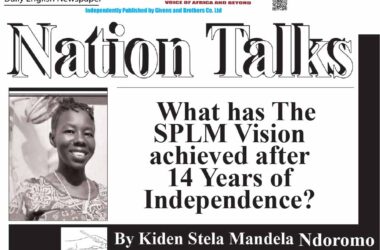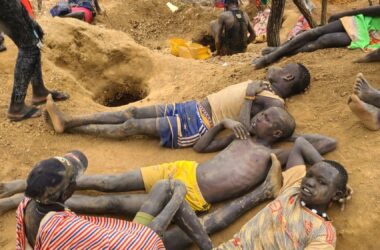Archbishop of Juba, Stephen Ameyu Martin Mullah is among 18 cardinals from Africa, part of College of Cardinal of the Conclave, to participate in electing the next Pope.
This followed the death of Pope Francis, on Monday 21st April 2025, which marked the beginning of a series of events that lead to the eventual start of a conclave and election of a new Successor.
In a list released by the Vatican, African cardinals, in the College of Cardinals, to also take part in the conclave include; Fridolin Besungu from DR Congo, Ignace Dogbo from Ivory Coast, Stephen Brislin from South Africa, Arlindo Furtado from Cape Verde, Antoine Kambanda from Rwanda, and Jean-Pierre Kutwa from Ivory Coast.
Others are, John Njue from Kenya, Dieudonne Nzapalainga from Central Africa, Peter Okpaleke from Nigeria, Nakellentuba Ouedraogo from Burkina Faso, Protase Rugambwa from Tanzania, Robert Sarah from Guinea, and Berhaneyesus Souraphiel from Ethiopia.
Desire Tsarahazana of Madagascar, Peter Turkson from Ghana, Jean-Paul Vesco from Algeria and Cristobal Romero from Morocco, are also among the eligible cardinals for the conclave.
According to the Vatican, a total 135 eligible cardinals with majority from Europe, followed by Asia, known as the College of Cardinals, have voting rights.
The College of Cardinals remains the body responsible for electing the Pope, following a millennial tradition enshrined in precise canonical norms:
As of 21 April 2025, the College included 135 Cardinal Electors (Universi Dominici Gregis established a limit of 120 Cardinal Electors), 108 of whom were appointed by Pope Francis, and 117 non-electors.
Those who have already turned 80 years old on the day the Sede Vacante begins are excluded. However, Cardinals over 80 may still participate in preparatory meetings (General Congregations preceding the election).
The College of Electors consists exclusively of Cardinals:
The Conclave, as an “ancient institution,” is confirmed as the setting for the election of the new Pope. John Paul II reaffirmed its essential structure and mandated that all election proceedings take place exclusively in the Sistine Chapel of the Apostolic Palace:
As in the past, the need to safeguard the election of the Roman Pontiff from external influences and to entrust it to a qualified and predetermined electoral body is recognized.
Furthermore, the procedures of the Conclave aim not only to ensure freedom but also to guarantee the independence of judgment of each Cardinal Elector, protecting them from undue curiosity and inappropriate pressures.
Three main changes were introduced by the Constitution Universi Dominici Gregis:
1. For the entire duration of the election, the residences of the Cardinal electors and those involved in ensuring the proper conduct of the election are located in the Casa Santa Marta in Vatican City (p.42 UDG). Previously, cardinals were not allowed to leave the Sistine Chapel for the entire duration of the voting process.
2. Cardinal electors can cast their votes for the election of the Pope only through a secret ballot (p.9 UDG). This abolishes the options provided by previous regulations for an election by acclamation or inspiration (quasi ex inspiratione), which were deemed no longer suitable for reflecting the thoughts of such an extensive and diverse electoral body. The election by compromise (per compromissum) was also abolished as it was difficult to implement and could lead to a certain degree of irresponsibility among electors, who, in this case, would not be required to cast a personal vote (p.9 UDG). Under this method of election, if several rounds of voting failed to produce a candidate with the required majority, the Cardinal electors could unanimously agree to a compromise, adopting a different majority criterion.
3. Regarding the votes required for the valid election of the new Pope, paragraph 75 of Universi Dominici Gregis initially established that after the 33rd or 34th ballot, if no consensus was reached, voting could proceed with only an absolute majority being sufficient. However, this provision was modified by Pope Benedict XVI through the Motu Proprio Aliquibus mutationibus in normis de electione Romani Pontificis, signed on June 11, 2007, and enacted on June 26 of the same year. This restored the traditional rule that for a valid election of the new Pope, a qualified two-thirds majority of the votes from the cardinal electors present is always required.




